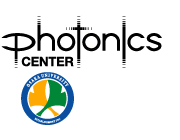【研究成果】2014年
研究成果74
Cadmium-Free Sugar-Chain-Immobilized Fluorescent Nanoparticles Containing Low-Toxicity ZnS-AgInS2 Cores for Probing Lectin and Cells
Hiroyuki Shinchi, Masahiro Wakao, Nonoka Nagata, Masaya Sakamoto, Eiko Mochizuki, Taro Uematsu, Susumu Kuwabata, and Yasuo Suda
Bioconjugate Chem. 2014, 25, 286−295
Sugar chains play a significant role in various biological processes through sugar chain–protein and sugar chain–sugar chain interactions. To date, various tools for analyzing sugar chains biofunctions have been developed. Fluorescent nanoparticles (FNPs) functionalized with carbohydrate, such as quantum dots (QDs), are an attractive imaging tool for analyzing carbohydrate biofunctions in vitro and in vivo. Most FNPs, however, consist of highly toxic elements such as cadmium, tellurium, selenium, and so on, causing problems in long-term bioimaging because of their cytotoxicity. In this study, we developed cadmium-free sugar-chain-immobilized fluorescent nanoparticles (SFNPs) using ZnS-AgInS2 (ZAIS) solid solution nanoparticles (NPs) of low or negligible toxicity as core components, and investigated their bioavailability and cytotoxicity. SFNPs were prepared by mixing our originally developed sugar-chain-ligand conjugates with ZAIS/ZnS core/shell NPs. In binding experiments with lectin, the obtained ZAIS/ZnS SFNPs interacted with an appropriate lectin to give specific aggregates, and their binding interaction was visually and/or spectroscopically detected. In addition, these SFNPs were successfully utilized for cytometry analysis and cellular imaging in which the cell was found to possess different sugar-binding properties. The results of the cytotoxicity assay indicated that SFNPs containing ZAIS/ZnS have much lower toxicity than those containing cadmium. These data strongly suggest that our designed SFNPs can be widely utilized in various biosensing applications involved in carbohydrates.





